How to Organize Your Day
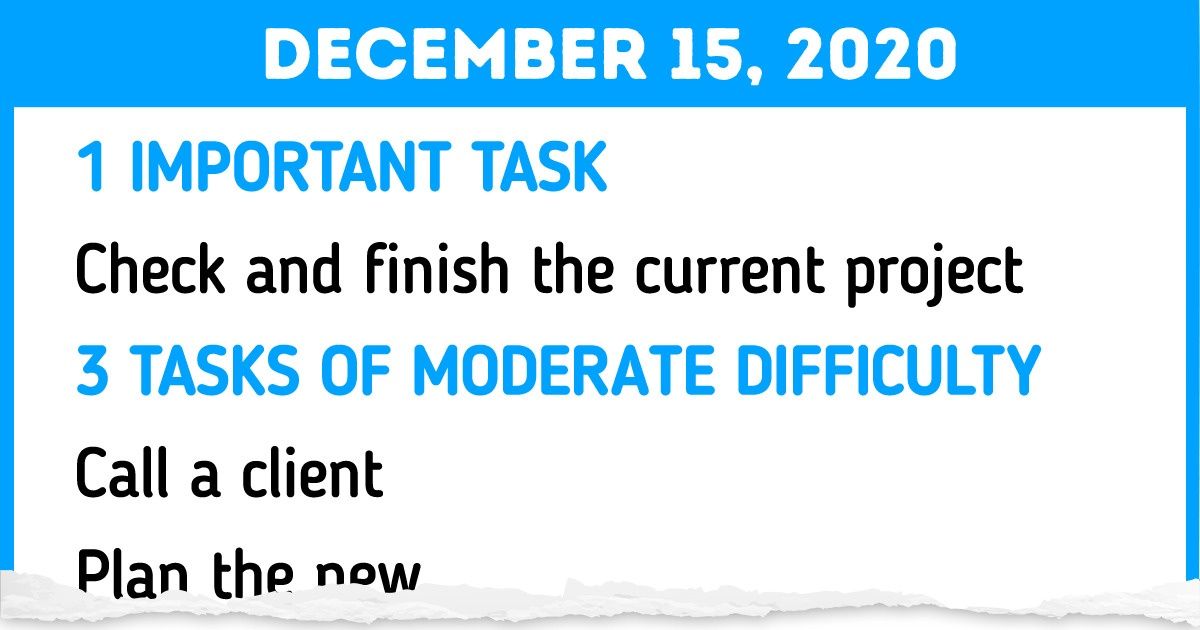
When you are overloaded with many tasks or with new tasks happening every day, it’s natural to get lost and forget to do something important. Simple methods for time management will help you to get your work under control and not to miss anything.
5-Minute Crafts prepared an overview of 6 popular time management techniques. You will need a pen and a daily planner — either a paper one or an app.
1. Schedule
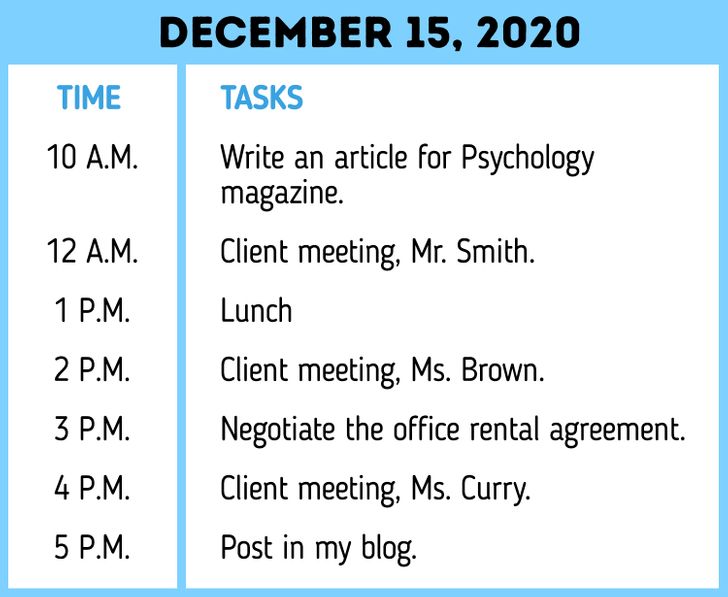
The hourly schedule is helpful if you have to finish your tasks by a certain hour, if you have frequent meetings, or if you work with clients.
Let’s say you are a psychologist and you meet 3 clients every day at 12 PM, 2 PM, and 4 PM. Besides, you write articles for a thematic magazine and blog about your profession. You write the article before the appointment at 10 AM, and the blog post at the end of your workday, at 5 PM. You have lunch at 1 PM, and take care of any administrative work at 3 PM.
You will need a daily planner with lines divided by hours. Write down your work tasks and appointments across the specific time. You can make these schedules weeks in advance, this way you will always know when you have gaps to book time for new clients.
2. To-do list
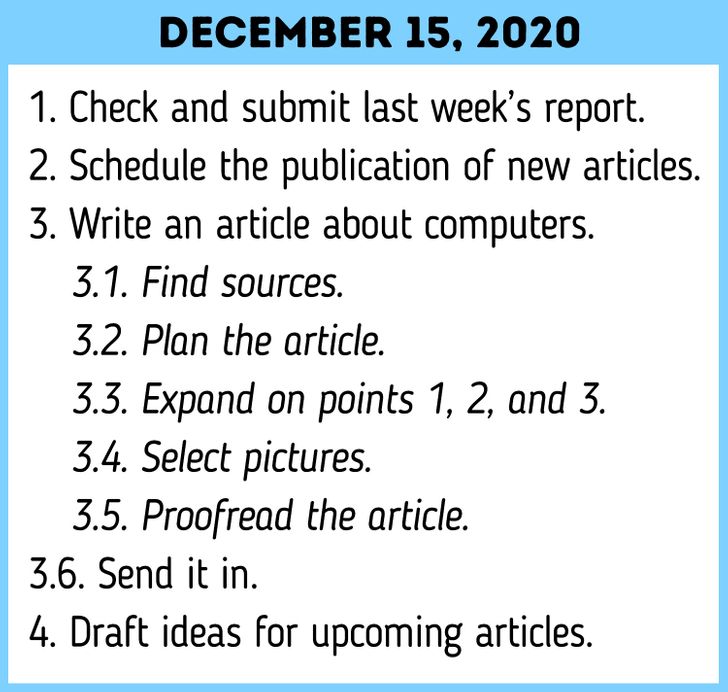
You will find a simple to-do list helpful if you do routine tasks every day without a certain schedule.
You can make a simple, numbered to-do list of your tasks, or sort them by priority — from most important to least important.
You can also divide complex tasks into components. Let’s say you are a journalist. Your task is to write an article. The task seems complicated because you don’t know where to start, so you procrastinate. But if you break the task down into subtasks, like find sources, draw up an article plan, outline points 1, 2, and 3, choose pictures, proofread, and send, it will no longer seem as difficult.
3. Stephen Covey’s method
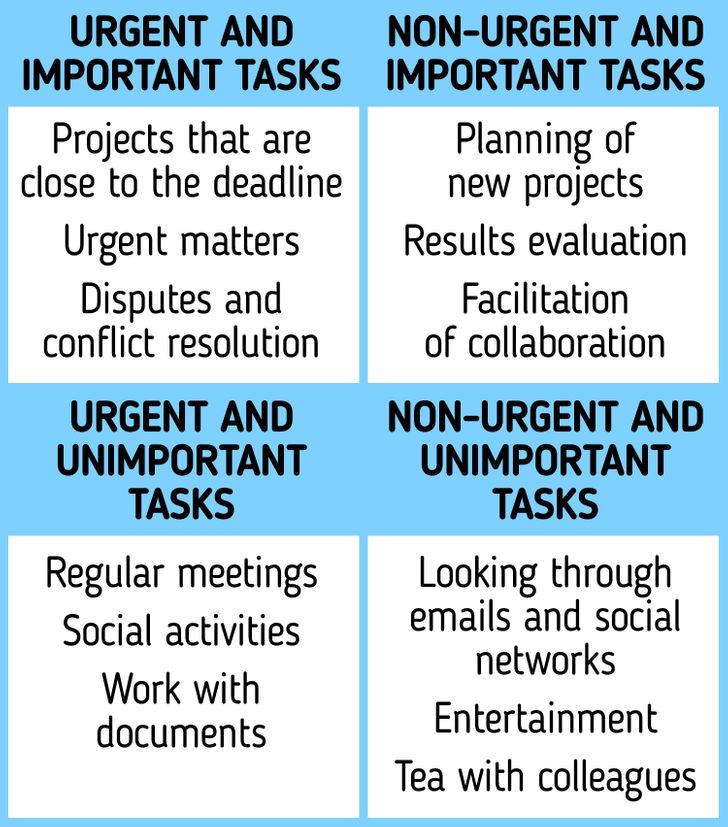
In his book The 7 Habits of Highly Effective People, Stephen Covey, an American educator, proposed a time management system that is based on a list of tasks. According to Covey, all tasks should be divided into:
- Urgent and important (projects that are close to the deadline, urgent matters, resolution of crises, disputes, and conflicts)
- Urgent and not important (routine meetings, social activities, document reviews, incoming calls)
- Not urgent and important (planning new projects, evaluating results, facilitating collaboration)
- Not urgent and not important (checking emails and social networks, entertainment, tea with colleagues)
According to Covey’s method, urgent and important tasks need to be done first, urgent and not important tasks should be delegated to those to whom they are important, you should dedicate your main working time to not urgent and important tasks, and you can postpone not urgent and not important tasks.
4. Rule of 3
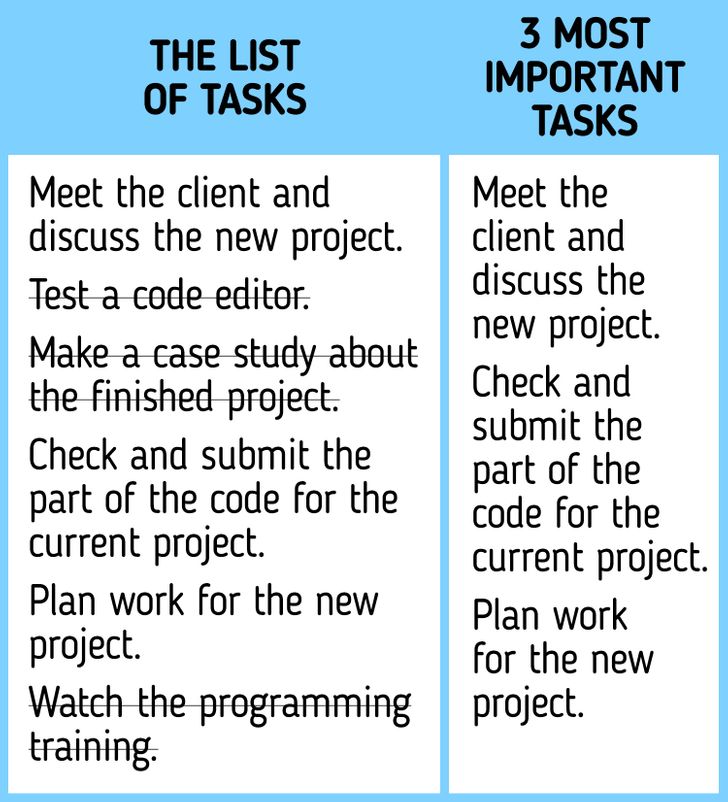
You will find the Rule of Three helpful if you have many current tasks, some of which are not urgent. The core of this method is that you have to choose 3 tasks every day that you will dedicate your entire work time to.
Let’s say you are a programmer, and the list of your tasks looks like this:
-
Meet the client and discuss the new project.
-
Test a code editor that was recommended by your colleagues.
-
Make a case study about the finished project for your blog.
-
Check and submit your part of the code for the current project.
-
Plan work for the new project.
-
Watch programming training video.
First, you have to analyze the list of your tasks and choose the ones where a deadline is set for the planned day. In our example, they are a client meeting and submission of the part of the code. You can’t postpone these tasks. You should also choose one more task out of the remaining ones that you must or are interested in finishing today. For instance, you should plan work for the new project. The remaining tasks don’t seem that urgent, so you can postpone them for days that are not very busy.
5. The 1-3-5 Rule
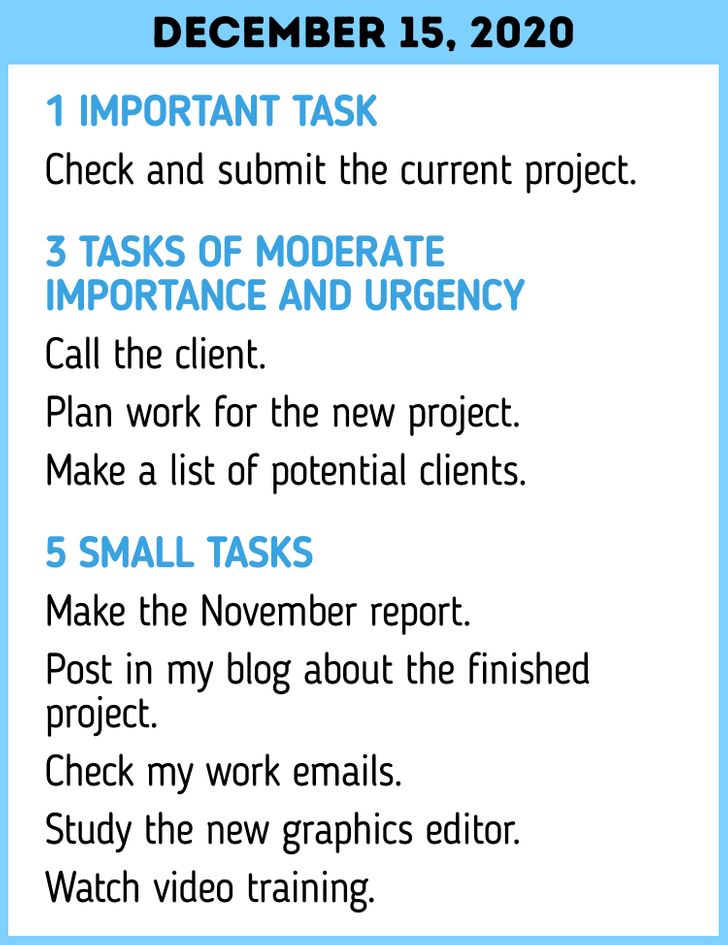
You will find the 1—3—5 Rule helpful if you have a lot of tasks, the majority of which you can’t remove or postpone.
The rule is quite simple. First, plan the most important task that you have to finish today. Then add 3 more tasks that are moderate in importance and urgency. In the end, add 5 small tasks that you can do after finishing your primary tasks. As a result, you can do 9 tasks during the day.
6. The Pomodoro Technique
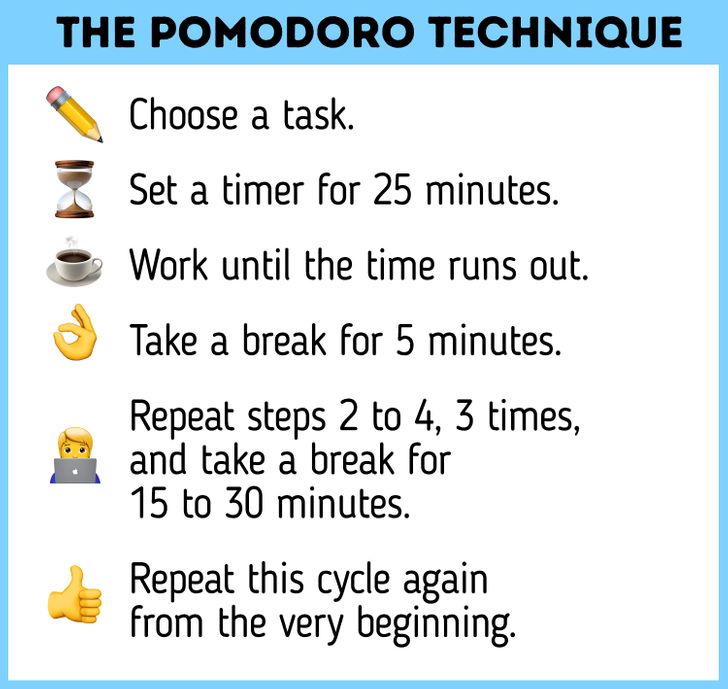
This time management method was developed by Francesco Cirillo in the late 1980s. It will be helpful for those who need to finish 1 to 2 routine tasks during a workday. This technique helps you keep your focus, take (on time) breaks during monotonous workdays, and meet deadlines. It was named after the tomato-shaped kitchen timer that Cirillo used as a university student. Its idea is simple:
-
Choose a task.
-
Set the timer on your phone or computer for 25 minutes.
-
Focus on your task and work until the time runs out.
-
Take a 5-minute break.
-
Repeat steps 2 to 4, 3 times, and take a break for 15 to 30 minutes.
-
Repeat this cycle from the very beginning, if necessary.